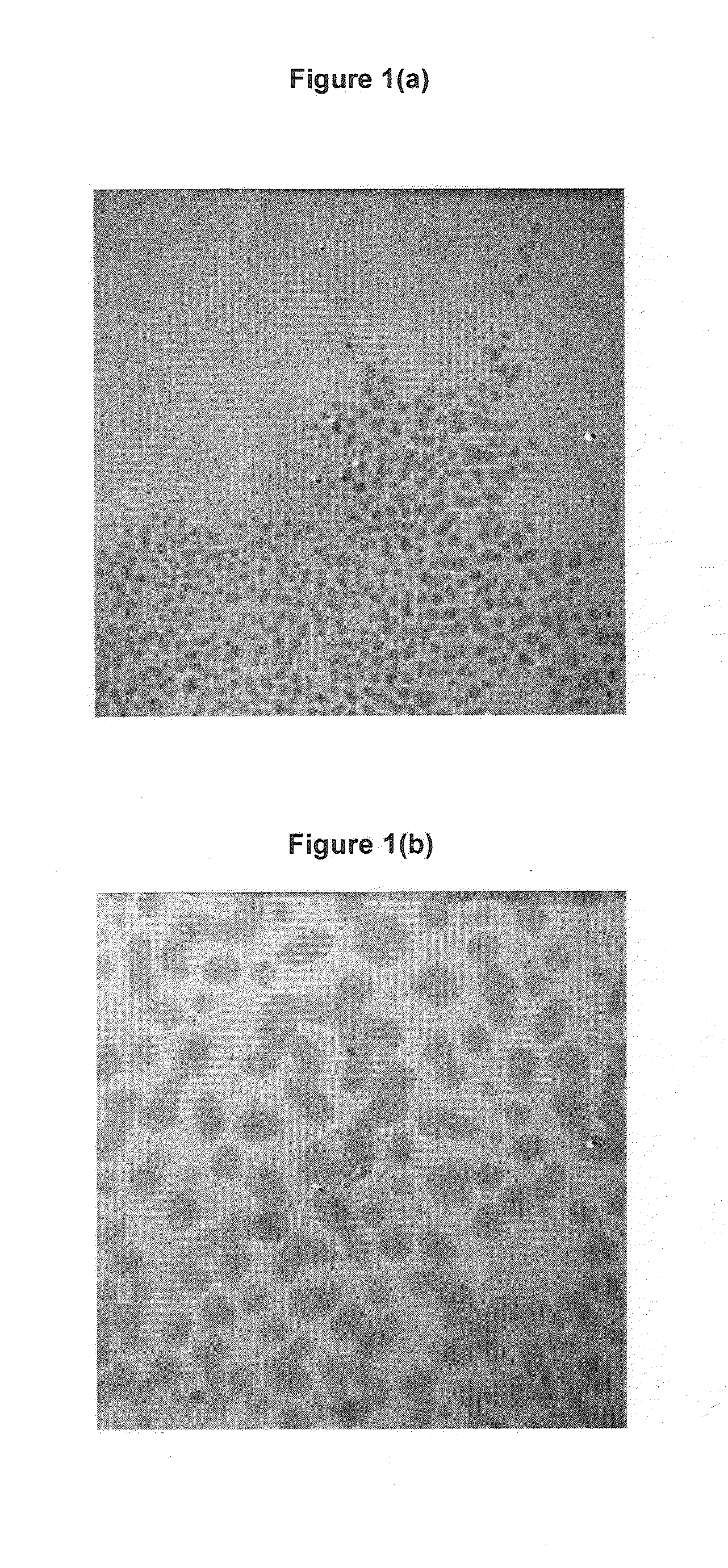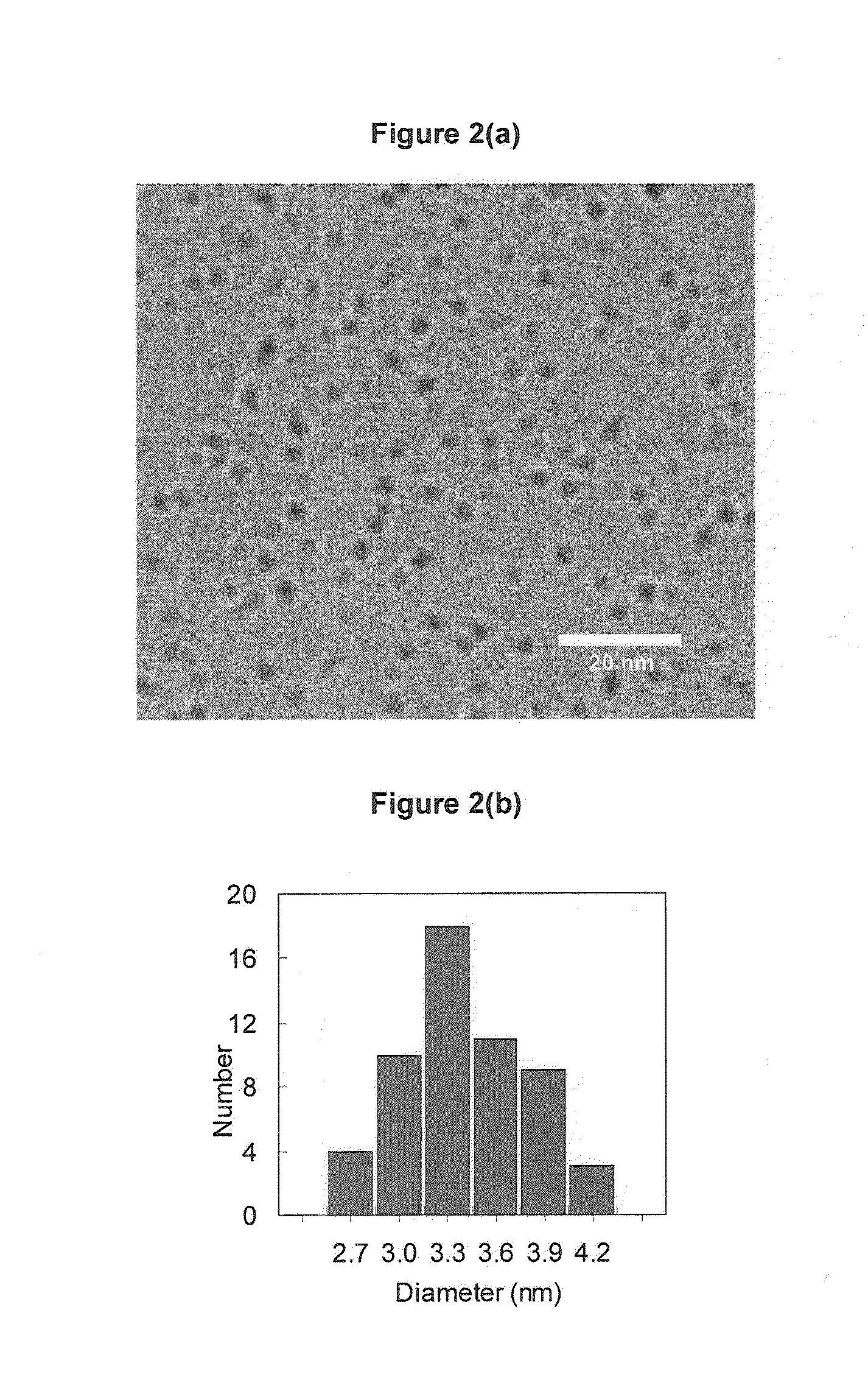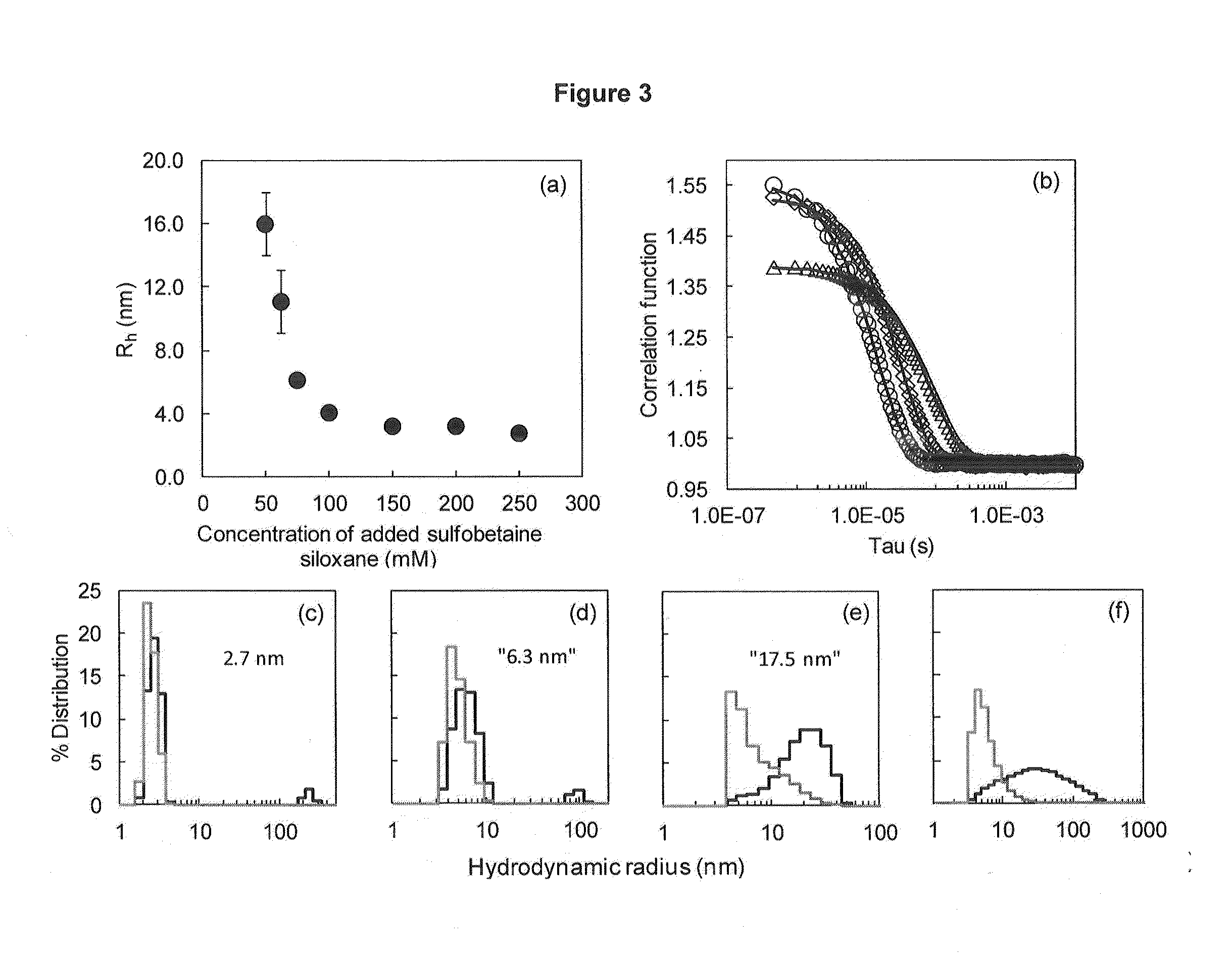Stable Iron Oxide Nanoparticles and Method of Production
a technology of iron oxide and nanoparticles, applied in the direction of magnetic bodies, magnetic materials, magnetism of organic/organic metal materials, etc., can solve the problems of iron oxide being particularly troublesome, prone to lose its stabilizing surface charge, and difficult to produ
- Summary
- Abstract
- Description
- Claims
- Application Information
AI Technical Summary
Benefits of technology
Problems solved by technology
Method used
Image
Examples
example 1
Post-Synthesis Zwitteration
[0072]In this Example, nanoparticles were prepared, then a zwitterion layer was produced on the surface of the particles. In this “post synthesis” method, 4 mmol of FeCl3 in H2O and 2 mmol FeCl2 dissolved in 2 M HCl were mixed with a magnetic stir bar, followed by the addition of 50 mL of 0.7 M NH4OH. Addition of ammonia resulted in a black precipitate of nanoparticles. 5 mmol of SBS solution was added directly into the reaction flask and stirred vigorously. The latter step reversed the precipitation process allowing the particles to redisperse into the solution. The whole mixture was then heated at 80° C. for 6 hours. After cooling to room temp, ethanol was added to the aqueous reaction medium (EtOH:H2O 3:1) and the particles were collected with a magnet. Several washing and collecting steps were followed using ethanol. The particles were dried under N2 and stored.
example 2
In Situ Zwitteration
[0073]This Example illustrates forming iron oxide nanoparticles in the presence of a zwitterion siloxane. To the iron salts mixed according to the ratio in Example 1, 50 mL of different molar concentrations of freshly prepared sulfobetaine siloxane solution was added. The solution was mixed and 50 mL of 0.7 M NH4OH was then added in one portion to yield a black solution of iron oxide nanoparticles. The solution was covered with a watch glass and immersed in a pre-heated water bath at 80° C. for 1 hour.
example 3
Introduction of Amine Functionality Along with Zwitterions Functionality
[0074]The introduction of amine functionality onto the surface was achieved using (3-aminopropyl)triethoxysilane (APTES). In this case, 100 microL of APTES was injected into the hot reaction mixture 30 minutes post heating, other parameters remained unchanged. The reaction was allowed to proceed for another 30 minutes before being cooled to room temperature.
PUM
| Property | Measurement | Unit |
|---|---|---|
| size | aaaaa | aaaaa |
| thickness | aaaaa | aaaaa |
| thickness | aaaaa | aaaaa |
Abstract
Description
Claims
Application Information
 Login to View More
Login to View More - R&D
- Intellectual Property
- Life Sciences
- Materials
- Tech Scout
- Unparalleled Data Quality
- Higher Quality Content
- 60% Fewer Hallucinations
Browse by: Latest US Patents, China's latest patents, Technical Efficacy Thesaurus, Application Domain, Technology Topic, Popular Technical Reports.
© 2025 PatSnap. All rights reserved.Legal|Privacy policy|Modern Slavery Act Transparency Statement|Sitemap|About US| Contact US: help@patsnap.com



